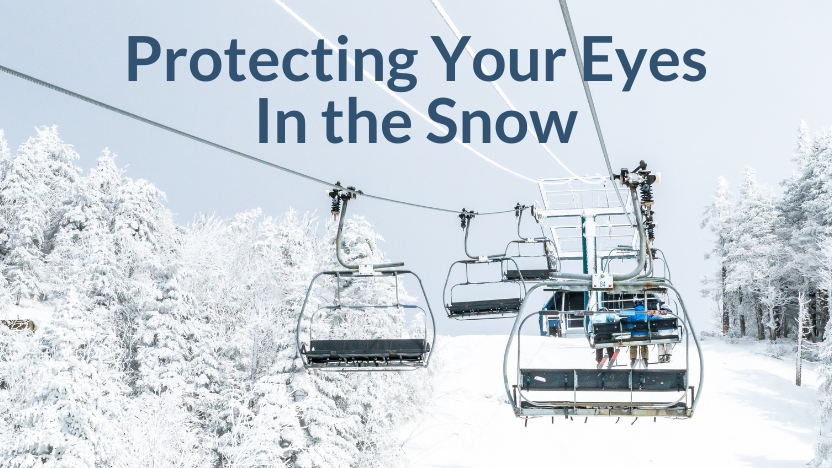Protect Your Eyes During Snowy Days
Posted by EyePromise on Jan 8th 2025
Skiing and other snow sports (snowboarding, sledding, tubing, etc.) are popular pastimes in the wintertime. These pastimes can be quite dangerous, with speeds averaging between 10 to 20 miles per hour (mph) for recreational skiers, and varying obstacles (bumps, trees, other people, etc.) throughout each run. However, few realize the hazards these types of activities can pose to your eyes.
Here are some of the ways snow-day activities can be harmful to your eyes and how you can protect them.
Glare
One of the most common issues experienced during snowy activities like skiing is glare. The sun reflects off the snow, intensifying its brightness and making it difficult to see without squinting. Since snow typically covers much of the area surrounding these activities, it’s difficult to escape the bright light.
Ultraviolet and Blue light

Activities like skiing and snowboarding tend to be held in areas with higher altitudes due to the weather patterns being more conducive to the conditions required for these activities. Due to these altitudes, ultraviolet (UV) and blue light wavelengths tend to be stronger. This happens for a few reasons:
- At higher altitudes, you’re physically closer to the sun.
- The air is thinner at higher altitudes, leaving less molecules to scatter and diminish the strength of the light wavelength.
- Per our first point, the snow reflects the sun, so the UV and blue light is reflected, too.
The strength of these light wavelengths can cause several eye problems, including severe ones with consistent exposure over time. Things like corneal sunburn (the front part of your eye) and snow-blindness, which is a more serious version of sunburn and characterized by symptoms like red, itchy eyes and sensitivity to light, can occur from UV exposure. In the worst cases, cataracts and some cancers can also occur.
Occasional Dry Eye
Along with thin air, the areas that are popular for snowy activities tend to have freezing wind and low humidity. This combination is a catalyst for occasional dry eye, leading to symptoms like:
- Eye dryness
- Redness
- Irritation
- Blurred vision
- Itchiness
- Burning
- Excessive watering
Solutions
For many of these issues, a good pair of ski goggles is the remedy. Ski goggles can protect your eyes from the elements, and if you get a tinted pair, it can also protect them from the glare and UV and blue light. However, if you’re still experiencing occasional dry eye, you can take EyePromise® EZ Tears™. EyePromise EZ Tears is a doctor-formulated eye vitamin designed to help reduce the symptoms associated with occasional dry eye. Made with powerful natural ingredients, EZ Tears has been shown to relieve symptoms in as little as one week and keep them away as long as you stay consistent with supplementation.
Learn more about occasional dry eye and EyePromise EZ Tears.
It’s fun to enjoy snowy pastimes like skiing, sledding, and snowboarding, but make sure you’re giving your eyes the protection they need (and deserve).


